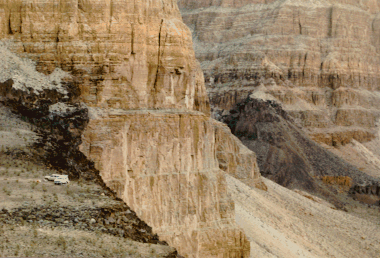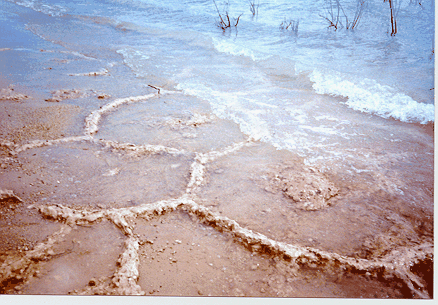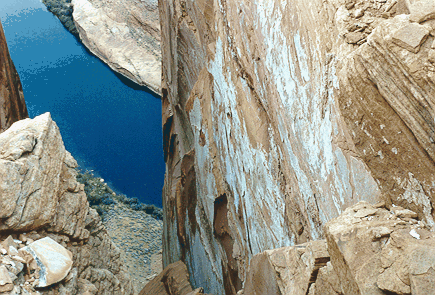25 Good Reasons Not to Drain Lake Powell
Drought Cycles Plague the West
The Colorado River - 100 Years Ago
| Dams are nothing new to the Grand Canyon. There
is clear evidence that in the very recent geological past (2 million years ago to
400,000), lava spilled into the western Grand Canyon on numerous occasions.
These lava flows were sufficiently thick to block the Colorado River and created lakes
that stretched for hundreds of miles upstream. Each of these 13 dams blocked the Colorado River and created a natural lake very much
like the present day Lake Powell. The river/dam/lake cycle repeated itself
many times with the most recent of these lakes forming 400,000 years ago. The dams and lakes lasted sufficiently long to leave behind many geologic features in the Grand Canyon. Lava Falls and Vulcan's Forge are two obvious features that are well known to river runners but one can find other interesting artifact deposits tucked away in Grand Canyon , Marble Canyon and Glen Canyon. One of the lakes (Toroweap Lake) left a large gravel, sand and silt terrace deposit above Lee's Ferry and sediments from this lake also exist today as the main floor of Havasu Canyon and the high terrace deposits at Elves' Chasm. It may seem incredible...but the world famous waterfalls of Havasu Creek may actually plunge down a series of terraces left behind by the rise and fall of a number of these fresh water lakes. Perhaps the most widespread lake deposits can be attributed to Prospect Lake. It
is an interesting fact that the Havasupai Indians found an agricultural opportunity by
farming an ancient lake deposit of fine silt, protected in a protected side canyon in a
remote section of the Grand Canyon. It was here that they settled and founded the
Village of Havasupia which continues to be occupated even today. mud flat cracks and other deposits harken back to a distant time period when still
water processes were much more dominant. It is no small irony that the site chosen for the present day Glen Canyon Dam was largely determined by a large nearby deposit of gravel just north of the dam site (a delta deposit in an ancient arm of Prospect Lake?). Talk about a recycling project! The deltaic deposits from one ancient dam and lake providing construction material for a new dam and lake. |



